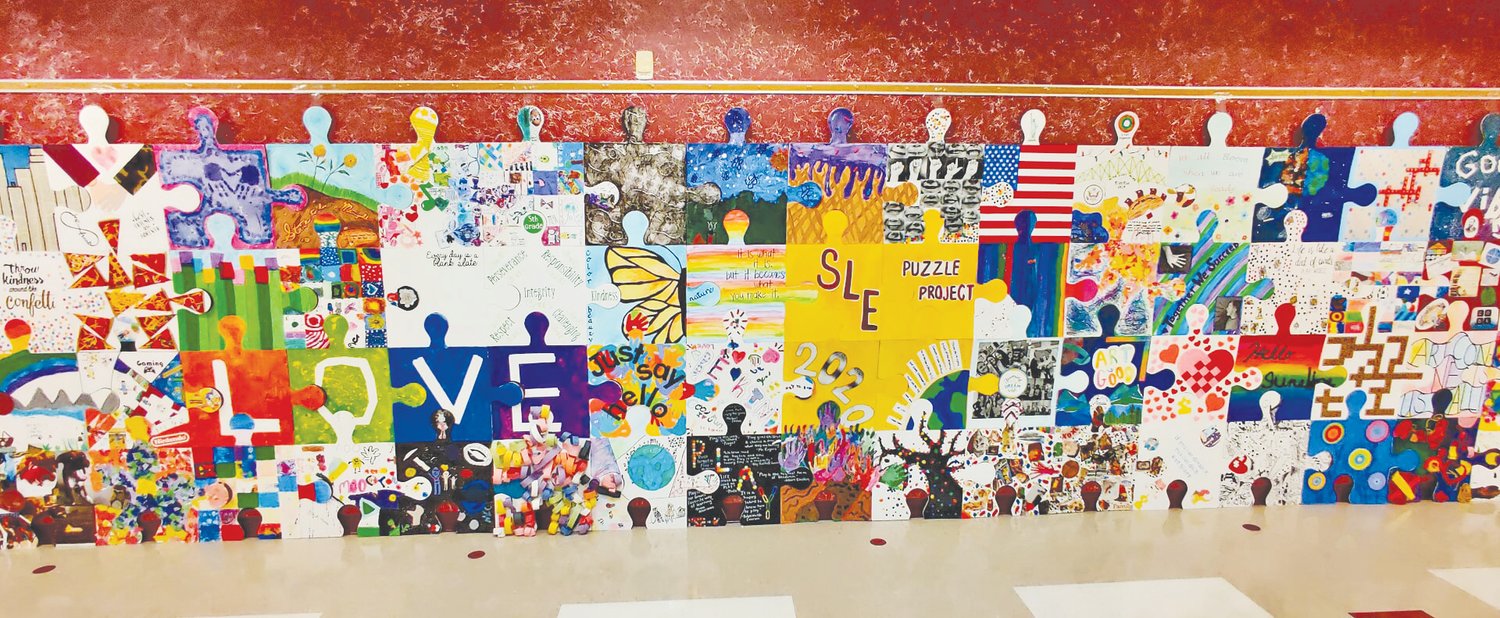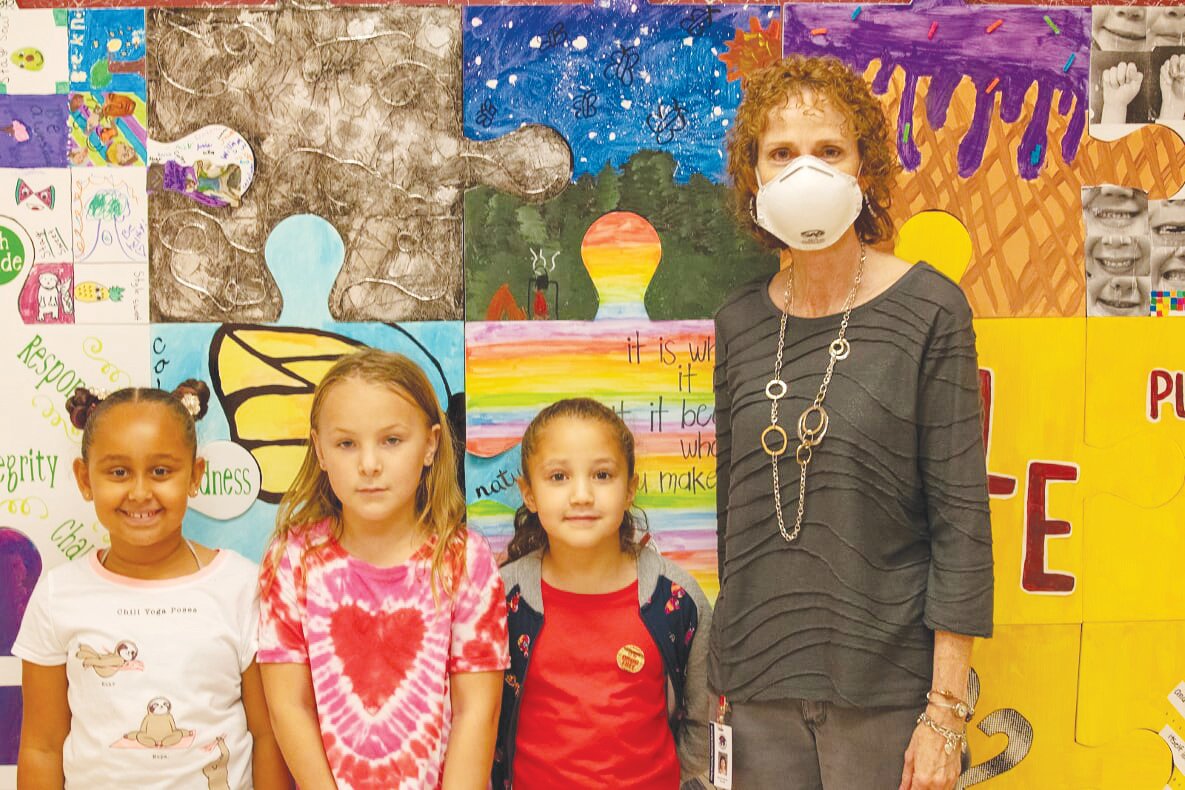Shadowlawn Elementary’ s 20-foot puzzle a piece in a global art project
GREEN COVE SPRINGS – A project that began with an artist in Brooklyn, New York, a decade ago that expanded globally, has made its way to the halls of Shadowlawn Elementary.
Many students and …
This item is available in full to subscribers.
Attention subscribers
To continue reading, you will need to either log in to your subscriber account, or purchase a new subscription.
If you are a current print subscriber, you can set up a free website account and connect your subscription to it by clicking here.
If you are a digital subscriber with an active, online-only subscription then you already have an account here. Just reset your password if you've not yet logged in to your account on this new site.
Otherwise, click here to view your options for subscribing.
Please log in to continueDon't have an ID?Print subscribersIf you're a print subscriber, but do not yet have an online account, click here to create one. Non-subscribersClick here to see your options for subscribing. Single day passYou also have the option of purchasing 24 hours of access, for $1.00. Click here to purchase a single day pass. |
Shadowlawn Elementary’ s 20-foot puzzle a piece in a global art project
GREEN COVE SPRINGS – A project that began with an artist in Brooklyn, New York, a decade ago that expanded globally, has made its way to the halls of Shadowlawn Elementary.
Many students and faculty members at the school contributed to the project, which features giant jigsaw puzzle pieces that stretched more than 20 feet of wall space in the school’s corridor when pieced together.
“Everybody starts with a blank piece of canvas, which is 24 inches by 24 inches. Everyone starts with the same art supplies, but as you can see, from there, that’s when everything changes,” artist Tim Kelly said when the project started in 2011.
Sharon Marsh is a teacher for gifted students. She said supplies were purchased from grant money provided by the Clay Education Foundation.
“It was grant money that we used to purchase the blank pieces,” said Marsh. “The puzzle is a collaboration project that was started over a decade ago with the artist Tim Kelly in New York. He started it with a youth group, and then everybody saw it when they put it together, and everybody wanted to participate.”
Marsh found information about it on Facebook and she reached out to him to find out how to get some of the pieces. She then worked with the guidance counselor to move the project forward. This started before classes were interrupted by the COVID-19 shutdown. At the time, the guidance counselor was working on the seven mindsets with the students, and coincidentally was on the “we are connected” module. That’s when the project became a reality.
The art teacher then became involved, working with students to help them decide what to put on the different pieces. Different faculty teams each got a part of the puzzle to work on as well.
“Fifth-grade teachers made a piece, third-grade teachers made a piece, guidance made a piece, administration made a piece, art, P.E., music, everybody got to make a piece,” said Marsh.
By then, the students had also been busy working on their contributions.
Two days before it was to be assembled and mounted, the school was closed due to the pandemic, so it had to wait until the new school year.
The puzzle has a wide variety of colors, textures and designs, showing the different thoughts, ideas and feelings of everyone involved. Some pieces have paintings on them; others have multi-colored tissue paper ribbons arranged in patterns. One four-piece stretch in the middle of the puzzle features the word ‘Love’ with one letter on each piece in a different color. Some other pieces are as simple as ‘2020,’ annotating the year in which the puzzle was created or are painted with mottos such as “Together we succeed.”
After returning to school in August, faculty decided since the pieces were all long completed, it had to go up, even if some of the students had moved onto junior high and wouldn’t see it.
“We couldn’t put it in the cafeteria any longer because we needed to space out the distance eating,” Marsh said. “So we just said let’s find an area where everybody can see it. It’s now in the hallway where the children pass it on the way to art class.”
Lilly McAllister, Cali Mars and Alexia Asfaw are all second graders who participated in the project.
“I got to do it with my friends, and I feel like it’s good. I like it,” said Asfaw.
“I feel good because we all did it together, and we made it pretty,” said Mars.
“It was really fun, and also, it made me feel like I was actually a part of something,” McAllister said. “I’m pretty amazed because it looks really good, and a lot of people spent a lot of time on this.”
The puzzle took about two months from beginning to completion, according to Marsh, followed by a long hiatus before it was connected and mounted. However, with the closed campus and limited visitation for health and safety reasons, few people have had the chance to see it in person.
The project is now a worldwide phenomenon. There has been so much participation that all the pieces can go up and down the Empire State Building twice. Shadowlawn isn’t sure yet if they will attempt to replicate the project in the future. While it would be the same idea, the outcome would likely be completely different with different faculty members and students, giving a brand-new spin on the same idea.
Even if they don’t, they know that their 20-foot contribution is part of something that’s both global and special.











